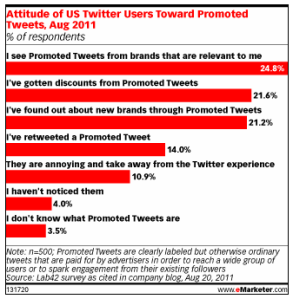One of the first advertising lessons revolves around the Four P’s: Product, Price, Place, and Promotion. But according to Hank Wasiak, partner of the marketing firm The Concept Farm and three time Emmy award winner, with the new age of social media comes a fifth P- People. Wasiak believes that in order for a company to achieve its marketing potential, that company must fully integrate social media with traditional media. Mass communication, and advertising, is no longer about sending one-way messages. In this digital age, as we are all aware, advertising MUST incorporate social media and engage its consumers in conversation.
This leads us to our main point- that the key to making online advertising work is to fully integrate social media marketing with traditional advertising campaigns. While this can be difficult, it is vitally important in today’s digitally immediate world. Here are a few quick key points to putting together social media.
Make sure to choose the right forms of social media. There are hundreds of websites and tools out there that can help your company out. The problem is finding which ones work right for a specific brand. Marketers need to asses their campaign goals and decide which forms of media will best help them accomplish those goals. Big names like Facebook and Twitter are an absolute must, but there are plenty of other platforms and tools available.
It’s also important to connect the various forms of social media together. Many companies choose to use their company website as the hub for all social media, while others are now using Facebook. It all depends on the target demographic for the advertising campaign. Using Facebook as a company’s main hub is also a smart decision because Facebook makes it very easy to link several forms of social media together. As a final incentive, Facebook users continue to grow as more demographics join that social media giant.
Finally, stay up to date. Companies may think that once they have created their accounts and implemented their campaigns that their work is done. The important thing about social media is that it is always changing. New platforms are constantly springing up while others die out and there will always be new ways to use existing social media. The secret is to stay on top of what is happening in the social media world.
There are countless other social media platforms out in the internet. The best way to learn how to utilize them fully is to go out and explore. Thanks for reading!



